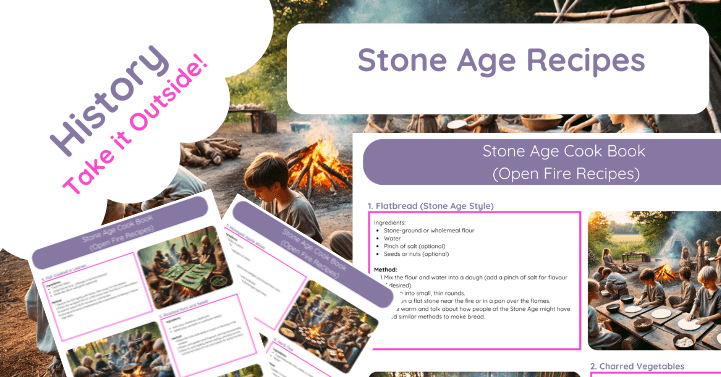Engaging children in Stone Age-inspired cooking over open fires offers a hands-on approach to understanding prehistoric life. This method aligns seamlessly with the experiential learning model of Forest Schools. It not only brings history to life but also imparts essential survival skills and fosters a deep connection with nature.
The Significance of Open-Fire Cooking in Forest Schools
Open-fire cooking serves as a multifaceted educational tool within Forest Schools. It teaches fire safety, culinary skills, and teamwork while providing a tangible link to ancestral practices. By preparing and cooking food as early humans did, children gain insights into the daily lives of Stone Age people.
Implementing Stone Age Recipes in Outdoor Learning
- Hung Fish (Fish on Sticks): This simple method involves cooking fish over a fire using green wood sticks, imparting a smoky flavour reminiscent of ancient techniques.
- Bere Bannocks: These bannocks Utilize Beremeal, an ancient form of barley, and are cooked on heated stones, reflecting Neolithic baking methods.
- Venison Skewers: Skewering venison and roasting it over an open flame mirrors the meat preparation techniques of early hunter-gatherers.
- Campfire Bread on a Stick: A simple dough wrapped around a stick and cooked over the fire, offering a hands-on experience in bread-making.
- Cooking with Embers: Utilizing the heat of embers to cook food, a method prevalent in ancient times, teaches patience and control over fire.
Safety and Hygiene Considerations
Adhering to safety protocols and maintaining hygiene standards is crucial when conducting open-fire cooking sessions. The Forest School Association provides comprehensive guidelines on campfire cooking, emphasizing the importance of preparation and supervision.
Enhancing the Learning Experience
Incorporating discussions about the origins of these recipes and the evolution of cooking techniques can deepen students’ understanding. Encouraging reflection on the differences between ancient and modern food preparation fosters critical thinking and appreciation for technological advancements.
Educators can create immersive educational experiences that connect students with history and nature by integrating Stone Age recipes into Forest School programs, cultivating practical skills and a sense of community.












